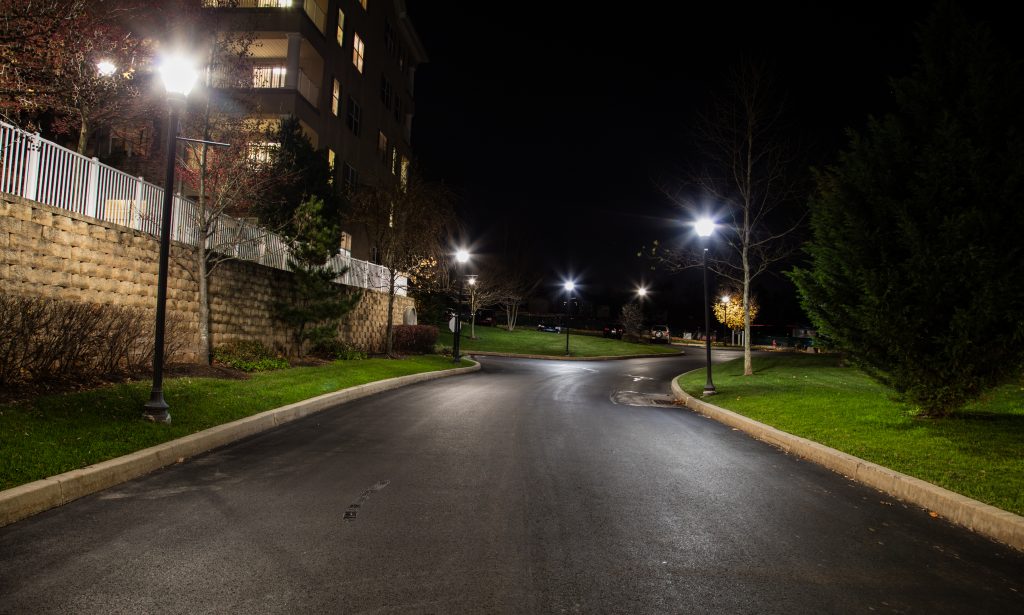How to Make College Campuses Safer

Like academics, the subject of safety is mission critical on college campuses.
From a facility manager’s perspective, the objective is to find ways to mitigate potential incidents of crime and injury. Such unfortunate outcomes can increase a university’s liability, insurance rates and bad media coverage, which could have a negative impact on student enrollment.
According to the National Center for Education Statistics, colleges reported the incidence of some 39,000 campus crimes in 2015, involving everything from burglaries/robberies to physical/sexual assault and car theft. In addition, a National Crime Victimization Survey (NCVS) reveals that roughly two-thirds of physical/sexual assaults and nearly three-quarters of all auto thefts occur at night.
A recent survey of 179,000 college students by CollegeStats.org revealed that “walking on unlit pathways” represented one of students’ top safety concerns on campuses nationwide. A recent article published in University Business Magazine by author Neal Raisman further reiterated that “nothing generates a sense of fear like dark areas” that decrease the sense of security for students and faculty.
More Light, More Security
There is one quick fix that can dramatically improve safety on campuses across the country, and it’s an idea that is often overlooked. From a security perspective, the best way to proactively improve a college environment is with quality lighting.
Improving pedestrian lighting along walkways, dormitories and academic buildings is the best place to start. University facility managers have their own checklist to determine which streetlighting is the perfect fit for a venue in higher education.
Previously dominated by more conventional halogen, incandescent, fluorescent, and HID light sources in higher education settings, pedestrian lighting have been revolutionized by the emergence of LED technology during the last five years.
Here are several factors that facility managers consider:
- Improved CCTV Resolution: A recent article in Private University Product & News noted that LED technology significantly enhanced the visibility (and subsequent usability) of security footage captured at colleges and universities utilizing closed-circuit television (CCTV) systems or who operated security cameras throughout their facilities.
- Reliability: While conventional light sources may not always be able to withstand certain types of harsh environments, the unique properties of LEDs render them extremely durable and weather-resistant, especially in cold and/or wet conditions.
- Consistency and Uniformity: Since conventional light sources can suffer from considerable lumen depreciation over time, LED technology maintains a significantly higher level of light output for much longer (per the lighting industry’s L70/LM-80 measures) and isn’t subject to performance issues, such as color shifting and hot spotting, both of which can cause gaps and shadows along pathways that can promote criminal behavior or lead to accidents. Their availability in a variety of color temperatures offers clean, white light that delivers improved visibility and a greater sense of security.
- Long Life: While conventional light sources require more frequent change-out and maintenance due to their more limited lifespan, the 50,000-100,000 hours of rated life available on many LED fixtures ensure years—even decades!—of maintenance-free operation, resulting in lower maintenance costs and enhanced maintenance crew productivity.
- Environmental Friendliness and Appeal: Unlike fluorescent and HID sources, LEDs contain no mercury or other hazardous substances and run much cooler and more efficiently, losing far less energy in the form of heat relative to their predecessors.
In terms of keeping expenses within a budget, LED technology draws only a fraction of the power of its more conventional lighting counterparts, reducing energy bills by one-third to as much as 90 percent, while enhancing sustainability and helping to position the institution as a leader in green practices. Colleges are now able to cut their utility bills by adding enhanced security features, such as reliable, energy-efficient lighting.
Upgrading your lights on campus will help make your school be seen in the best light.
For more information on how Amerlux can help make your student body, faculty and staff feel safer, visit us at Avista.Amerlux.com.
Want more?



